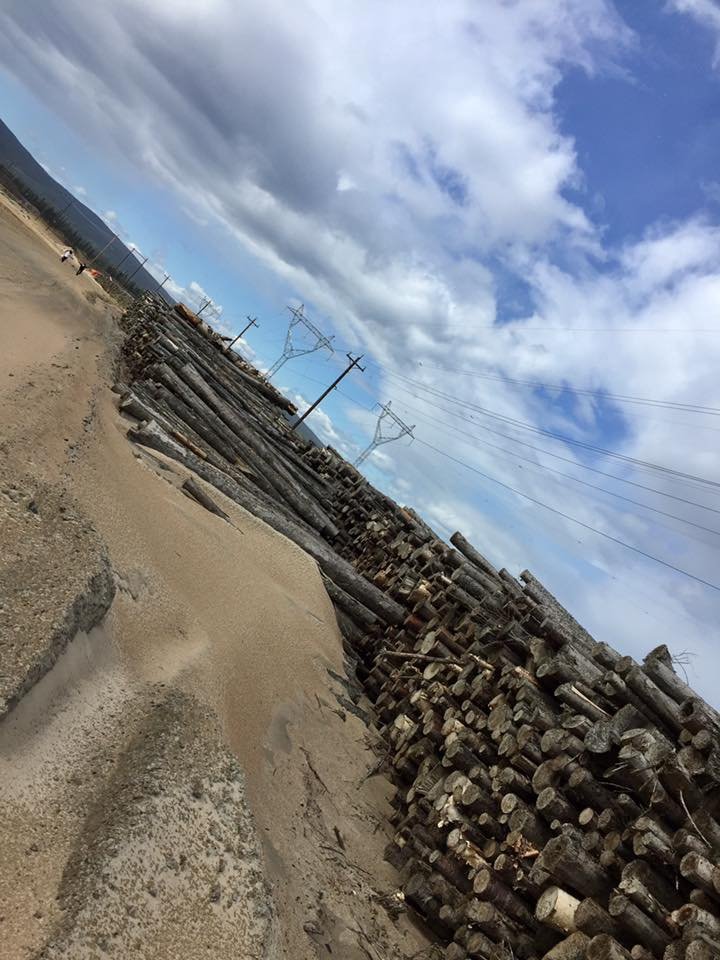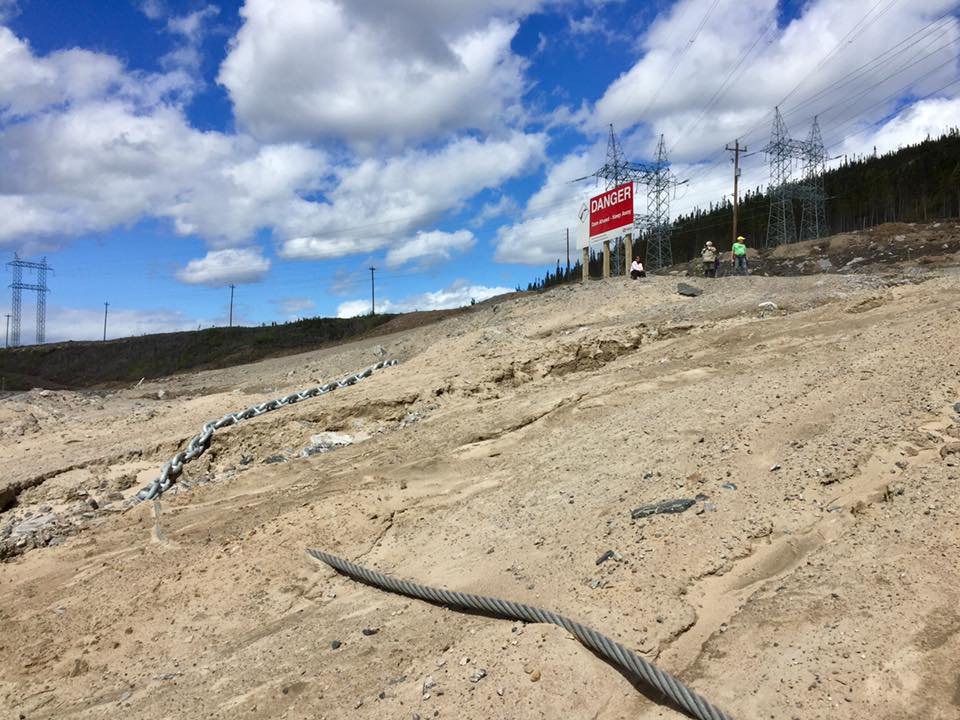
Residential school survivor Marjorie Flowers has mixed feelings about Prime Minister Justin Trudeau’s trip to Labrador Friday, November 24 to deliver the residential schools apology left out of former PM Stephen Harper’s 2008 Parliamentary apology, which excluded Newfoundland and Labrador from the residential schools compensation package.
Flowers attended Lake Melville High School in North West River, a remote community in central Labrador. She lived there from 1974 to 1977 and was only allowed to visit her family in the summer and at Christmas. Her experience left a deep scar.
“I feel it every day,” Flowers says from her home in Goose Bay, Labrador.
“I won’t discredit the value in an apology,” Flowers continues, “but I’m puzzled at how the same government is perpetrating a disaster against the environment and our culture.”
Flowers is referring to the massive Muskrat Falls hydroelectric project, which she says “is putting our lives in peril.” Last summer, Flowers spent 10 days in maximum security lockup at Her Majesty’s Penitentiary in St. John’s for taking part in peaceful protests trying to stop the project.

nalcorenergy.com
Aerial view of Muskrat Falls dam project under construction, June 2015.
The $12.7 billion dam project on the Lower Churchill River about 25 kilometres west of Happy Valley-Goose Bay, Labrador, has received blessings from successive governments in the form of $9.2 billion in federal loan guarantees despite growing evidence of potentially dangerous impacts from methylmercury poisoning on Indigenous populations living downstream.
The project undertaken in 2013 by Nalcor Energy, a provincial Crown corporation, is rapidly crystallizing as an issue that makes a mockery of federal Liberal campaign promises on the environment, science-based decision-making and respect for nation-to-nation relations. Nalcor CEO Stan Marshall has declared the project a “boondoggle” that “should never have been built” after cost overruns expected to double hydro rates for ratepayers in Newfoundland. On Monday, the Newfoundland government announced a public inquiry into how the project has gone so far over budget.
The Labrador Land Protectors, a grassroots coalition, have led years of protests demanding a fulsome consultation, as mandated by the UN Declaration On The Rights Of Indigenous Peoples (UNDRIP). While the Liberals have pledged to respect UNDRIP, those on the ground say their “free, prior, and informed consent” has never been sought nor received.
Among the project’s growing list of critics is David Vardy, an economist and former secretary to the Newfoundland and Labrador cabinet (who also served as chair of the provincial public utilities board). Vardy recently submitted a detailed, 50-page brief warning of the dangers posed by the Muskrat Falls project.
He calls the project a huge mistake that “has spiralled into a major economic and environmental catastrophe” that many fear could well result in a fate similar to Grassy Narrows, the northern Ontario Indigenous community where 90 per cent of the population suffers the ravages of mercury poisoning from chemicals dumped into the water by the nearby Dryden Chemicals Limited processing plant. There, symptoms among the populace include numbness in fingers and toes, tremors, cardiovascular problems, endocrine disruption and damage to hearing, eyesight and speech.

Matthew Behrens
Methylmercury levels are expected to rise by as much as 1,500 per cent in Indigenous communities living downstream from Muskrat Falls dam project.
At Muskrat Falls, the concern is methylmercury, a neurotoxin produced from decaying trees, vegetation and soil that will be left underwater by the project, which is nearing completion.
Nalcor claims there will be “no measurable effect” on communities downstream from the project.
But when leaders in Nunatsiavut (formed in 2005 as the first Inuit self-government body in Canada) contacted Harvard University to conduct an independent study, their 2016 report was a bombshell, illustrating how methylmercury levels in area waters would rise dramatically above both American and (more lax) Canadian health guidelines. The bioaccumulation of methylmercury poses a significant health hazard for Labrador’s Indigenous cultures that rely on fish, seal, and other forms of aquatic life for sustenance.
Protests followed the report’s release that led to a five-day occupation of the work site in October 2016, provoking criminal charges, a court injunction and hunger strikes by renowned Inuk sculptor Billy Gauthier and Indigenous activists Delilah Saunders and Jerry Kohlmeister.

Matthew Behrens
Muskrat Falls protest in Ottawa including (sitting from left) Mitzi Wall with hunger strikers Billy Gauthier, Jerry Kohlmeister and Delilah Saunders.
The resulting uptick in public attention forced the provincial government to commit to clearance of trees and vegetation around the proposed reservoir area to reduce the potential for methylmercury accumulation. However, the Inuit were informed 11 months later that “the major commitment to lower water levels in the reservoir to allow for further mitigation measures will not be honoured,” according to Nunatsiavut President Johannes Lampe.
Equally vexing for those living downstream is the fear of a catastrophic dam break at a neck of land called the North Spur. Last year, the world’s leading quick clay expert, Stig Bernander, produced a detailed report declaring “the safety and reliability of the Muskrat Falls dam have not been demonstrated.”
The growing body of science questioning Muskrat Falls has been largely dismissed in Ottawa. While acknowledging that Muskrat Falls “has been beset by difficulties, cost overruns and delays… [and that] the project has been in trouble,” Natural Resources Minister Jim Carr insists the project will continue to receive Ottawa’s support as “part of the government’s strategy to make sure we are producing non-emitting sources of electricity.”
But opponents say playing the green energy card and the offer of jobs to locals, another strategy being employed by Nalcor to win support, fails to address both the threat posed by methane emissions from hydro reservoirs as well as what skyrocketing methylmercury levels could mean for the future of Indigenous communities in the province.
“You cannot put a cost on the loss of culture,” says Kelly Morrissey, a Nunatsiavummiuk Inuk woman who is especially worried about family members in Rigolet, where methylmercury exposure could rise by as much as 1,500 per cent.
“Do we have to have a sacrificial population in order to meet green energy targets?”
While Trudeau will likely stay in Labrador for less than a day, he will receive an earful from land protectors calling for the suspension of operations at Muskrat Falls until a truly independent, mutually agreed upon and transparent review process has been undertaken.
For Gauthier, it’s the least that can be done. “I’m not sure it can be completely stopped, but I know they can do a lot more to protect the environment and at least keep our cultural practices alive by allowing the waters to be clean enough to harvest from.”
news@nowtoronto.com | @nowtoronto














